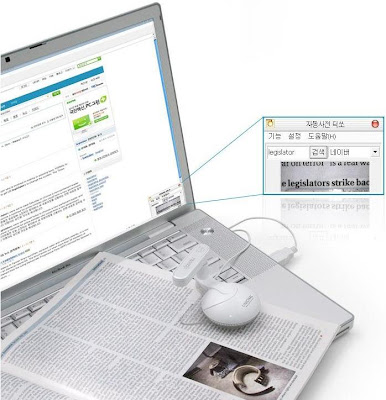The first thing to notice when you join a private BitTorrent site is the eye-popping quality of the torrents. Each one is carefully culled, hand-picked through a strict moderation process. However, before you start hammering away on that download link - here are a few things you need to know.
On private torrent sites, everything revolves around ratios. A 1:1 ratio (or 1.0) means that you’ve downloaded exactly the same amount of data as you’ve uploaded. Thus a 0.80 ratio indicates that you’ve uploaded less than you’ve downloaded, which is hurtful to the health of the torrent. Inversely, a 3.0 ratio means you’ve uploaded 3 times more data than you’ve downloaded. Strive to achieve at least a 1.0 ratio - each site will have specific consequences for members who maintain a ratio of less than this. Attain a ratio over 1.0 and the rewards shall follow you into the P2P afterlife.
If you’re brand-new to a private site, it will be difficult in the beginning to acquire a 1.0 ratio. Luckily, users are given a ‘grace’ period to achieve this. Since there are so many more seeds than leechers (a total flip-flop from public BT sites), it becomes harder to upload to others - due to the fact that there are fewer people to share with.
So why go through all the trouble to keep an honest ratio? Because deep down, you’re an upstanding denizen of file-sharing society! Aside from that shameless pat-on-the-back, good ratios offer many perks, including an upgraded account on the tracker (i.e. VIP status), higher download speeds, free “invites” for your friends, and no waiting periods associated with accounts in arrears.
Here are Ten Tips to get your ratio in top-shape as fast as possible:
1. Start out with Smaller Files
Initially, opt for smaller (i.e. under 1 GB) files for downloading. This gives you a greater chance of someone coming along after you and downloading the same torrent (and you’ll be able to upload to them). Obviously a 700MB movie file will be more appealing to other site members than a 30GB ‘Blu-Ray’ rip.
2. Jump on the ‘Newly Released’ torrents
This is a great tip for increasing your ratio in a hurry. Camp out in your favorite private BT site, and refresh the torrent listings frequently. Newly added entries will have many more leechers than seeds, so you’ll be able to share (upload) more data. To maximize this tip, select smaller files - the “TV Episode” category works great for this.
3. Select Files that have a High ‘L’ or upload number
This is important. When selecting torrents, base your initial selections on a high number of leechers (the more, the better). This will ensure you have many avenues to upload to during (and after) the transfer. When starting out on a new private BT site, we would even go so far as to say that you should download torrents that you don’t want - just start grabbing torrents that have lots of leechers. Once your ratio get over the 1:1 (1.0) mark, delete them.
TIP: If one of your seeding torrents remains popular, leave it running in µtorrent permanently. This will always help to boost your upload ratio.
4. Avoid ‘Zero-Leech’ torrents
When you’re new to a private site, steer clear of the ‘zero-leech’ torrents - it is impossible to increase your share ratio when there are no other downloaders. When viewing a list of torrents, look for the “Leecher” column (or just “L”) and avoid anything that has a zero ( “0″ ) in it. After your account ratio has become relatively stable, now is the time to snag whatever you want.
5. Leave some tasks running in uTorrent
After the completed download of a torrent, leave the task running (as a seed) in µtorrent to increase your upload statistics. Don’t delete (or move) the files of a running task! You can, however, extract (unRAR) the files, or copy the files from one place to the next. In the event of a movie/video file - you’ll be able to “burn” or “extract” the *.avi file (or even play it on the PC) without affecting the seeding torrent.
TIP: Always keep a few things running as ’seeds’ in your BT client. If you notice that they aren’t uploading, replace them with newer ones.
6. Go for the ‘Freebie’ downloads
Many private sites will offer “free” torrents that won’t count against your download statistics (thus, your ratio will remain unchanged). Grab these freebies - especially when searching for torrents on a new account.
7. Use ‘Credits’ to purchase…
A popular feature among superior private BitTorrent sites is the addition of a ‘credits’ feature for account holders. Credits can be used to ‘purchase’ VIP status, increased sharing ratios and other perks. Not all sites are the same, but some credits can be acquired just from staying active in their IRC channel, or from just having the torrents available for download in your BT client.
8. Do NOT try to ‘cheat’ the Private Trackers
There are a variety of ratio cheating tips available out there, but don’t be tempted. Trackers are fairly sophisticated and ever-evolving. If you get caught cheating, you won’t even be warned - it’s a permanent ban for you and bye-bye for good.
9. Set a proper Upload Limit
Setting a proper upload limit in the BT client makes all the difference! You’ll want to supply a high enough limit to maximize uploading, but not have it eat into your download bandwidth. The general rule is to set it at 80 - 85% of your upload limit. To figure this out, visit www.speedtest.net and conduct the simple test. Results are shown in kilobits, so divide the result by 1/8 and then multiply that by 0.85. This will give you the proper number in KB/s (KiloBytes).
In µtorrent, go to OPTIONS > Preferences… > Connection and enter your upload rate. Click “Apply” and then “OK” to save the changes. While your in that same ’settings’ page, make sure to use a port number from the good list (e.g. 49152 - 65535).

10. And if all else fails…donate
Most sites allow for monetary contributions to keep up with the server costs. If you enjoy a particular site immensely but cannot seem to be able to approach a decent sharing ratio (due to turning off your computer at night, going to work, or sharing your computer with your kids, wife, husband or siblings), think about donating. In most cases even a not-so-generous gratuity will robustly affect your account status - plus you’ll feel good about helping out the BitTorrent community.
Other Tips - Follow ‘The Rules’
Yeah, we know: you hate rules! That’s why you probably moved out of your parents’ basement. Rules are probably why some turned to P2P.
Nevertheless, rules are an important aspect to private BT sites - they ensure healthy torrents and blazing-fast download speeds for all. Each site will have their “rules” posted - the link is usually not hard to find. Below are some general rules / tips that pertain to any private BitTorrent site:
Use an ‘Accepted’ BitTorrent client
Not all private trackers are the same - and each one has different rules in regards to which BitTorrent client is on the “allowable” list. Most sites recommend µtorrent, but only specific versions (or builds) of it. If you stick with v1.6.1 or the latest version v1.7.7 (recommended), you can’t go wrong with ANY private site (avoid any versions in between these numbers). And do not use BitComet on private trackers.
Proper BitTorrent client configuration:
Many trackers recommend that you disable DHT and Peer Exchange (PEX) in your BT client’s settings. To do this in µtorrent, go to OPTIONS > Preferences… > and select the BitTorrent tab. Remove the three checkmarks that pertain to DHT and PEX (see image below):

Do not ‘Hit & Run’ a Private BT site:
A ‘Hit & Run’ (or H&R) is when someone joins a private tracker, and downloads as much as they can before making off without uploading to a proper ratio. While this practice is frowned upon even on public sites such as mininova.org, it is deplorable to private sites. This can (and sometimes will) lead to your IP address being banned from the site - forever.
Stick within these guidelines for HAPPY Torrenting!






















